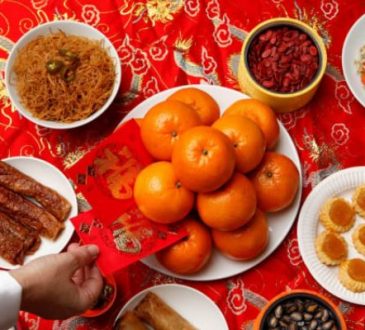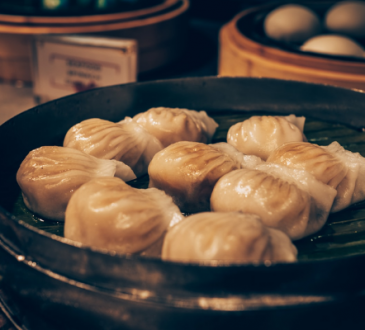Chinese food with meat: Exploring the Diverse World of Meat Dishes
Chinese cuisine is renowned worldwide for its rich history, diverse flavors, and vibrant culinary traditions. Among its vast array of culinary delights, meat dishes hold a special place, showcasing the ingenuity and creativity of Chinese chefs throughout the centuries. From succulent pork to tender beef and flavorful poultry, Chinese meat dishes offer a tantalizing journey for the taste buds. In this exploration, we delve into the fascinating world of Chinese meat cuisine, examining its origins, key ingredients, cooking techniques, and regional variations.
Contents
Origins and Cultural Significance:

The consumption of meat in Chinese cuisine dates back thousands of years, with evidence of its presence in ancient texts and archaeological findings. Historically, meat was a luxury reserved for special occasions and feasts, symbolizing prosperity and abundance. As Chinese society evolved, so did its culinary practices, leading to the development of intricate meat dishes that are now an integral part of the country’s gastronomic heritage.
Key Ingredients and Flavors:
One of the defining characteristics of Chinese meat dishes is the harmonious balance of flavors achieved through the use of key ingredients such as soy sauce, ginger, garlic, and various aromatic spices. These ingredients not only enhance the natural taste of the meat but also impart depth and complexity to the dishes. Additionally, Chinese chefs often incorporate a variety of sauces and condiments, such as hoisin sauce, oyster sauce, and black bean sauce, to create unique flavor profiles that tantalize the palate.
Popular Meat Varieties: Pork, chicken, beef, and duck are among the most commonly used meats in Chinese cuisine, each offering its own distinct texture and flavor. Pork, in particular, holds a special place in Chinese culinary culture, with dishes like sweet and sour pork, braised pork belly, and char siu (barbecued pork) being beloved favorites across the country. Chicken is another versatile meat that features prominently in Chinese cooking, whether it’s in comforting soups, savory stir-fries, or aromatic braised dishes.
Regional Variations: One of the most fascinating aspects of Chinese cuisine is its regional diversity, with each region boasting its own unique culinary traditions and flavor profiles. In the north, dishes like Peking duck and Mongolian beef showcase the hearty flavors and bold spices characteristic of the region. Moving southwards, the cuisine becomes lighter and more nuanced, with dishes like Cantonese roast duck and Hainanese chicken rice highlighting the delicate flavors of the region’s ingredients.

Cooking Techniques: Chinese chefs employ a variety of cooking techniques to prepare meat dishes, ranging from stir-frying and steaming to braising and roasting. Stir-frying, in particular, is a beloved cooking method that allows for quick cooking over high heat, resulting in tender meat with a caramelized exterior. Steaming is another popular technique, especially for delicate meats like fish and chicken, preserving their natural flavors and nutrients. Braising, on the other hand, involves slow-cooking meat in a flavorful liquid, resulting in tender, melt-in-your-mouth dishes that are bursting with flavor.
Health Considerations: While Chinese meat dishes are undeniably delicious, it’s important to consider the health implications of consuming meat regularly. In recent years, there has been a growing awareness of the link between meat consumption and various health issues, including heart disease, obesity, and certain types of cancer. As such, many modern Chinese chefs and home cooks are exploring alternative ingredients and cooking methods to create healthier versions of traditional meat dishes, incorporating more vegetables, whole grains, and lean proteins into their recipes.
Regional Diversity and Culinary Traditions:
China’s vast geographical landscape gives rise to a diverse array of culinary traditions, each with its own unique take on meat cuisine. In the fiery kitchens of Sichuan province, bold flavors and spicy peppers reign supreme, resulting in dishes like kung pao chicken and twice-cooked pork that pack a punch with every bite. In contrast, the delicate flavors of Cantonese cuisine focus on preserving the natural taste and texture of the ingredients, as seen in dishes like steamed fish with ginger and scallions and barbecued char siu pork. From the hearty stews of the north to the light and refreshing flavors of the south, Chinese meat cuisine offers something to satisfy every palate.
Traditional Cooking Techniques: Chinese chefs employ a wide range of cooking techniques to prepare meat dishes, each designed to highlight the unique qualities of the ingredients. Stir-frying is perhaps the most iconic cooking method in Chinese cuisine, allowing for quick cooking over high heat and resulting in tender meat with a caramelized exterior. Steaming is another popular technique, particularly for delicate meats like fish and chicken, preserving their natural flavors and nutrients. Braising, roasting, and deep-frying are also commonly used, each imparting its distinct texture and flavor to the dish.
Modern Trends and Health Considerations:

In recent years, there has been a growing emphasis on health and wellness in Chinese cuisine, leading to a resurgence of interest in traditional cooking methods and locally sourced ingredients. Many modern Chinese chefs are exploring innovative ways to create healthier versions of classic meat dishes, incorporating more vegetables, whole grains, and lean proteins into their recipes. Additionally, there has been a rise in vegetarian and plant-based alternatives to traditional meat dishes, catering to the growing demand for sustainable and ethical dining options.
Conclusion:
Chinese meat cuisine is a testament to the rich culinary heritage and diverse cultural influences that have shaped China’s gastronomic landscape over the centuries. From humble street food stalls to opulent banquet halls, meat dishes continue to play a central role in Chinese dining culture, bringing people together to celebrate tradition, family, and good food. Whether you’re savoring a steaming bowl of spicy Sichuan hot pot or indulging in a platter of Cantonese-style roast pork, every bite tells a story of centuries-old culinary craftsmanship and unwavering passion for flavor. So the next time you sit down to enjoy a Chinese meal, take a moment to appreciate the artistry and innovation that goes into creating each mouthwatering meat dish.



